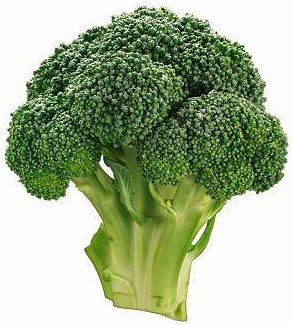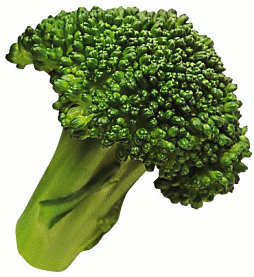

Broccoli

(Calabrese, Italian broccoli, asparagus [US]). Brassica oleracea, Italica Group. Cruciferae. An annual related to the cauliflower, which it resembles closely except that leaves are more divided and terminal and axillary loose green heads of flower buds are produced and form the edible portion of the plant. Although Brassica oleracea is widely distributed in Europe and has been cultivated for many centuries, the cultivation of sprouting broccoli appears to be a 20th century development and has attracted considerable interest both in the United States and Europe. It is also grown in the tropics during the cool season, particularly at elevations above 800m. The climatic and soil requirements are similar to those of cauliflower. Although not quite as sensitive to high temperatures, the quality of the heads deteriorates and flower buds may open prematurely when average temperatures exceed 20ºC. Cultivars are selected for summer crops are not frost-tolerant. Sprouting broccoli is harvested from early summer until the following autumn when temperatures prevent further growth. The spears of early sprouting broccoli are harvested from mid-winter through until spring; regular cutting of the tightly enclosed flower-heads maintains the consistent production of further side shoots, and harvesting may continue for about eight weeks. Given spacings of 75 x 75cm, early broccoli requires cultivation as for winter cauliflowers, although it is more useful in regions too cold for cauliflowers to crop well (surviving undamaged to temperatures of –17ºC), and is more tolerant of poorer soils, especially of heavy clays. Propagate from seed. For the earliest summer crops, seedlings should be raised under glasshouse conditions for transplanting out when spring temperatures are warm enough. These will provide a first harvest in early summer. For later crops, direct sowing in the field is recommended. For a given cultivar, both spear size and yield are controlled by plant spacing. For medium-sized heads, establish one plant every 20cm in rows 45cm apart. Plants must be kept well supplied with water. Once the main flowerhead has been harvested, which may take anything from 60-140 days from sowing depending on cultivar and climatic conditions, several smaller side shoots are usually produced lower down the stem. A number of hybrid cultivars are available having different times to maturity. ‘Mercedes’ is an early one, maturing in about 75 days from sowing; for later crops ‘Corvet’ matures within approximately 90 days. In addition to the more usual green sprouting forms there are purple and white types. Cultivars include ‘White Sprouting’ and ‘Early White Sprouting’; ‘Purple Sprouting’ and ‘Early Purple Sprouting’; ‘Emperor’ and ‘Green Goliath’ (green), and ‘Mariner’, with small dome-shaped green heads. Late cultivars include ‘Floccoli’, with creamy, cauliflower-like heads, ‘Late Purple’, and the green ‘De Cicco’ and ‘Paragon’.
|
Home
Grow Nuts
Grow Herbs
Grow Fruit
Cyberian Index
If you like this website and want one of your own contact
Cyberian All information correct at
time of publication and open to updates as necessary. No part of this website,
or its vectors, may be produced in any shape or form, using any type or design
of medium, system, equipment or otherwise without the prior written consensual
notice of the Cyberian. Any breach of these requirements will result in the
appropriate action. If in doubt, e-mail contact is recommended.
Some components of this website were obtained as open-source software and are
used in the same non-profit manner on this website.